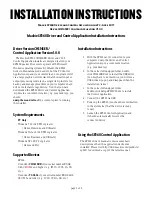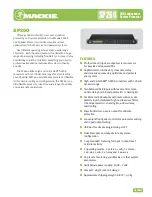
SOFTWARE INTERFACE
Symmetricom, Inc.
bc620/627AT Time and Frequency Processor
3-11
3.1.9 FIFO REGISTER (PAGE 1)
The TFP uses two FIFO (First-In First-Out) buffers; one to hold data packets written to the TFP
for setting time, setting the programmable periodic rate, etc. (Input FIFO); and one to hold data
packets from the TFP (Output FIFO). Each FIFO holds up to 512 bytes of data.
3.1.10 STROBE2 - STROBE6 TIME COINCIDENT STROBE REGISTERS (PAGE 1)
STROBE2 - STROBE6 registers hold the time coincidence strobe time from hours through
milliseconds. Table 3-3 shows the time data format for these registers.
3.2 FUNCTIONAL DESCRIPTION
This section provides a description of how to use these registers to achieve the desired function.
3.2.1 CHANGING THE ACTIVE PAGE
To access the page 0 registers write 0x00 to PAGE. To access the page one registers write 0x01
to PAGE. The respective PAGE registers will be active until the PAGE register is changed.
3.2.2 READING TIME ON DEMAND
A read of the TIMEREQ register will latch the current time (days through microseconds), and
this time will remain in the TIME0 - TIME7 registers until a subsequent read of TIMEREQ. The
TIME0 -TIME7 registers can be read immediately after reading TIMEREQ.
A second bus time request is supported with the EVENT time capture registers. A write to the
UNLOCK register latches time (days through 0.1 microseconds) in the EVENT0 - EVENT8
registers. The EVENT0 - EVENT8 registers can be read immediately after writing the UNLOCK
register.
3.2.3 EVENT TIME CAPTURE
The EVENT0 - EVENT8 registers are used to hold time which has been captured in response to
the active edge of the external event input, the programmable periodic output, or a write to the
UNLOCK register. As with the TIME0 - TIME7 registers, the EVENT0 - EVENT8 registers
can be read immediately after the event has occurred.
Artisan Technology Group - Quality Instrumentation ... Guaranteed | (888) 88-SOURCE | www.artisantg.com
















































